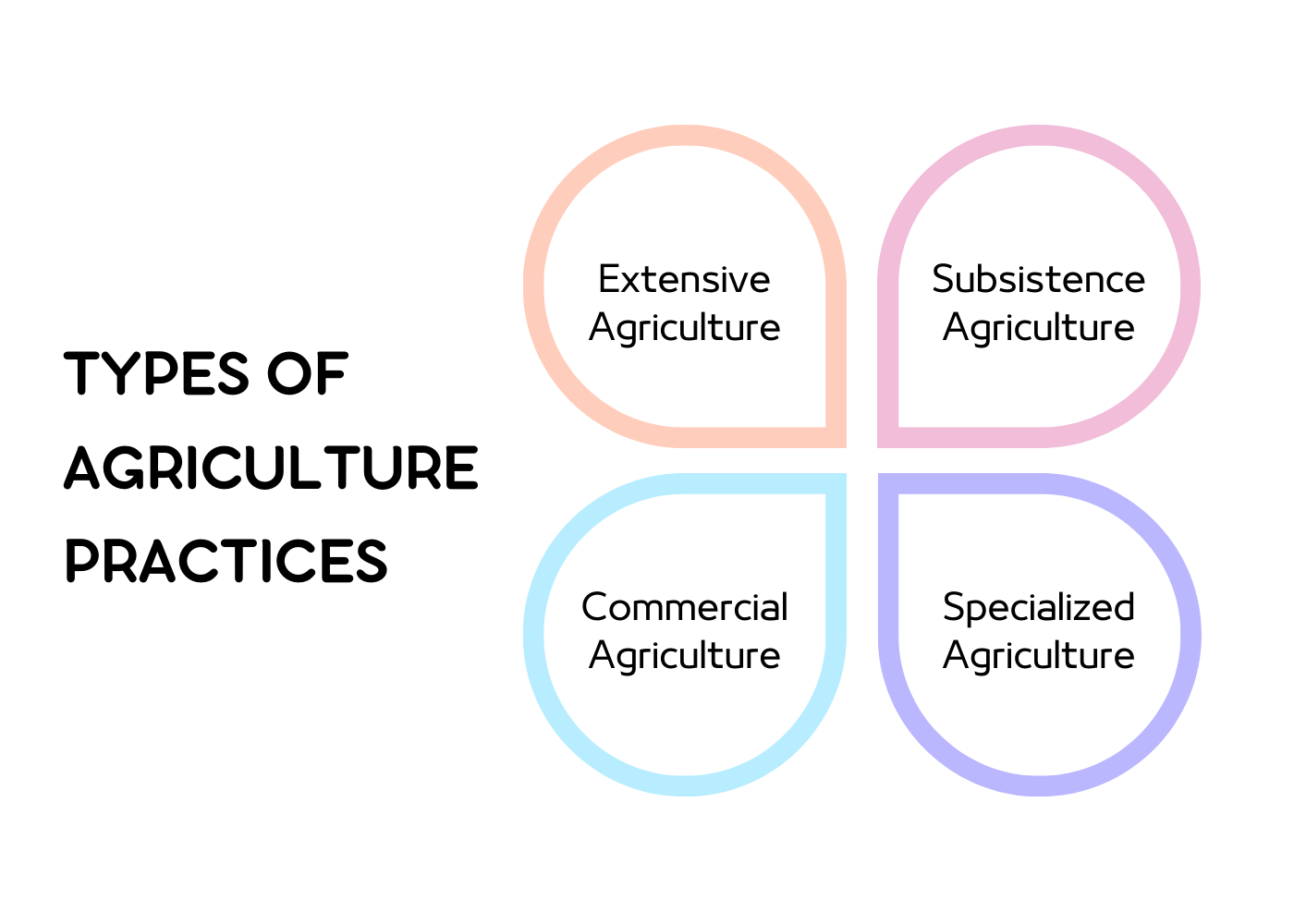Gist
1. Subsistence Agriculture
• Small-scale: Family-run farms focused on
self-sufficiency, often in developing countries.
• Low-intensity: Relies on manual labor, traditional tools,
and local resources.
• Ecological impact: Generally lower impact, maintaining a
closer connection to natural ecosystems.
2. Intensive Agriculture
• Large-scale: Commercial farms focused on high yields and
profit, often in developed countries.
• High-intensity: Relies heavily on machinery, fertilizers,
pesticides, and irrigation.
• Ecological impact: Can have significant negative impacts,
including soil degradation, water pollution, and biodiversity
loss.
3. Agroforestry
• Integrated system: Combining trees and crops on the same
land.
• Moderate intensity: Often falls between the extremes of
subsistence and intensive.
• Ecological impact: Can provide benefits like improved
soil fertility, erosion control, and habitat for diverse
species.
4. Organic Farming
• Focuses on avoiding synthetic chemicals: Utilizes natural
methods for pest control and fertilization.
• Moderate intensity: May not achieve the same yields as
intensive agriculture.
• Ecological impact: Generally considered more sustainable,
promoting soil health and biodiversity.
5. Sustainable Agriculture
• Broad umbrella term: Encompasses practices that minimize
environmental impact while maintaining productivity.
• Variable intensity: Can incorporate elements of various
types listed above.
• Ecological impact: Aims to balance human needs with
environmental sustainability.
Understanding the different types of agricultural practices and
their ecological implications is crucial for
• Promoting sustainable land management: Minimizing the
environmental footprint of agriculture.
• Enhancing food security: Ensuring efficient and
sustainable food production for a growing population.
• Preserving biodiversity: Protecting natural ecosystems
and the vital services they provide.
Overall, agricultural practices play a significant role in shaping
both geography and ecology. Choosing and implementing practices
that balance human needs with environmental sustainability is
essential for the future of our planet and its agricultural
landscapes.
